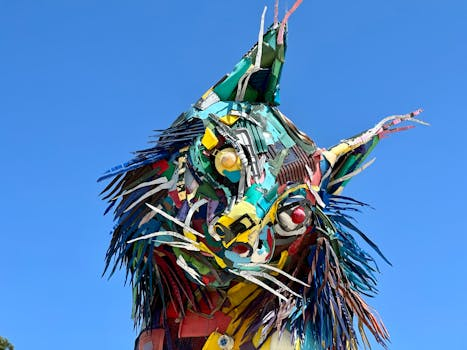Circular Fashion: The Rise of Recycled and Upcycled Styles
In recent years, sustainability has become a major buzzword, with people across the globe making a conscious effort to live a more environmentally friendly lifestyle. And this shift towards sustainability is not just limited to the food we eat or the products we use, but it has also extended to the fashion industry. As the world grapples with the consequences of fast fashion, a new trend has emerged – circular fashion. Where traditional fashion follows a linear model of take-make-waste, circular fashion aims to eliminate waste and pollution by keeping garments and materials in use for longer. So, let’s dive into the world of circular fashion and explore the rise of recycled and upcycled styles.
The concept of circular fashion
Before we understand the rise of recycled and upcycled styles, it is crucial to understand the concept of circular fashion. Essentially, circular fashion is a sustainable approach that focuses on designing, producing, and consuming fashion items in a way that minimizes negative impacts on the environment. It is based on the principle of the circular economy, which aims to keep materials and products in use for as long as possible and then recycle or upcycle them at the end of their life cycle.
The idea behind circular fashion is to create a closed-loop system with minimal waste and maximum efficiency. This means reusing and repurposing materials instead of extracting new resources, reducing the consumption of natural resources, and eliminating the disposal of waste into landfills. And as consumers become more aware of the negative environmental impacts of the traditional fashion industry, circular fashion has gained immense popularity and become a hot topic of conversation in the fashion world.
Recycled fashion: giving new life to old materials
Recycling is a key aspect of circular fashion. It involves taking materials from old garments and turning them into new ones. This process of recycling not only helps to reduce waste but also saves energy and resources that would have been used to create new materials. Recycling can also occur at different stages of the garment’s life cycle, such as pre-consumer and post-consumer recycling.
Pre-consumer recycling involves repurposing waste materials created during manufacturing, such as scraps of fabric, yarns, and threads. These materials are then collected and reused in the production of new garments. Post-consumer recycling, on the other hand, refers to the recycling of garments that have already been used by consumers. These garments are collected, sorted, and broken down into fibers, which are then used to create new textiles.
In recent years, recycled fashion has seen a surge in popularity, with many fashion brands incorporating it into their production processes. Brands like Adidas, H&M, and Patagonia have all introduced collection lines made entirely from recycled materials. This not only helps to reduce their environmental impact but also attracts eco-conscious consumers who are increasingly demanding sustainable fashion options.
Upcycled fashion: turning waste into wearable art
If recycling is giving new life to old materials, then upcycling is taking it one step further – it turns waste into something better. Upcycling involves taking discarded materials, such as old garments or leftover fabrics, and transforming them into new, higher quality products. This is often done through creative design processes, such as deconstructing, altering, and combining materials to create entirely new and unique pieces.
While recycling may require a lot of energy and resources, upcycling offers an even more sustainable solution. It not only eliminates waste but also gives new life and value to materials that would have otherwise ended up in landfills. Upcycled fashion is all about creating one-of-a-kind pieces that are not only environmentally friendly but also aesthetically appealing. This has led to the rise of many independent upcycling brands, offering consumers the opportunity to own truly sustainable and unique fashion pieces.
The future of circular fashion
As the fashion industry continues to grapple with the consequences of its unsustainable practices, circular fashion offers a glimmer of hope for a more sustainable future. With increasing consumer demand for sustainable options, many fashion brands are shifting towards circular fashion and incorporating recycled and upcycled styles into their collections. This has created a ripple effect, with more and more brands and consumers embracing circular fashion.
Circular fashion has immense potential to not only reduce the environmental impact of the fashion industry but also offer economic benefits. By utilizing materials that would have otherwise been considered waste, brands can reduce their production costs and create new business opportunities in the recycling and upcycling industries. And as circular fashion continues to gain traction, it has the power to transform the entire fashion industry and set a new standard for sustainability.
In conclusion
The rise of recycled and upcycled styles in the world of fashion is a clear indication of the growing shift towards more sustainable practices. With consumers becoming more environmentally conscious, circular fashion offers a viable solution to reduce the negative impacts of the industry. By recycling and upcycling materials, circular fashion not only minimizes waste but also creates unique and innovative fashion pieces. And with more and more brands embracing this trend, we can hope for a more sustainable and circular future for the fashion industry.










